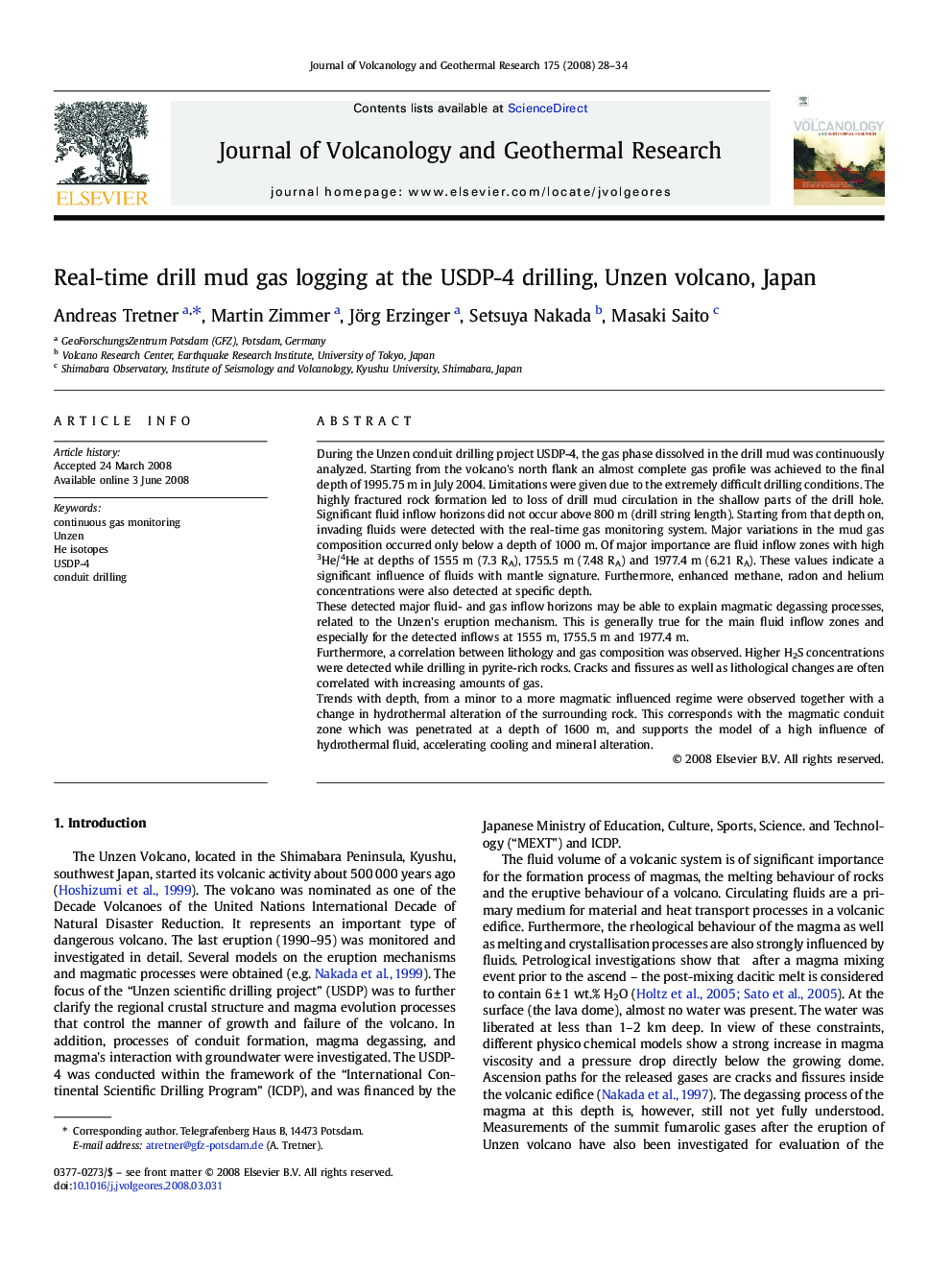| کد مقاله | کد نشریه | سال انتشار | مقاله انگلیسی | نسخه تمام متن |
|---|---|---|---|---|
| 4713624 | 1638445 | 2008 | 7 صفحه PDF | دانلود رایگان |

During the Unzen conduit drilling project USDP-4, the gas phase dissolved in the drill mud was continuously analyzed. Starting from the volcano's north flank an almost complete gas profile was achieved to the final depth of 1995.75 m in July 2004. Limitations were given due to the extremely difficult drilling conditions. The highly fractured rock formation led to loss of drill mud circulation in the shallow parts of the drill hole. Significant fluid inflow horizons did not occur above 800 m (drill string length). Starting from that depth on, invading fluids were detected with the real-time gas monitoring system. Major variations in the mud gas composition occurred only below a depth of 1000 m. Of major importance are fluid inflow zones with high 3He/4He at depths of 1555 m (7.3 RA), 1755.5 m (7.48 RA) and 1977.4 m (6.21 RA). These values indicate a significant influence of fluids with mantle signature. Furthermore, enhanced methane, radon and helium concentrations were also detected at specific depth.These detected major fluid- and gas inflow horizons may be able to explain magmatic degassing processes, related to the Unzen's eruption mechanism. This is generally true for the main fluid inflow zones and especially for the detected inflows at 1555 m, 1755.5 m and 1977.4 m.Furthermore, a correlation between lithology and gas composition was observed. Higher H2S concentrations were detected while drilling in pyrite-rich rocks. Cracks and fissures as well as lithological changes are often correlated with increasing amounts of gas.Trends with depth, from a minor to a more magmatic influenced regime were observed together with a change in hydrothermal alteration of the surrounding rock. This corresponds with the magmatic conduit zone which was penetrated at a depth of 1600 m, and supports the model of a high influence of hydrothermal fluid, accelerating cooling and mineral alteration.
Journal: Journal of Volcanology and Geothermal Research - Volume 175, Issues 1–2, 30 July 2008, Pages 28–34